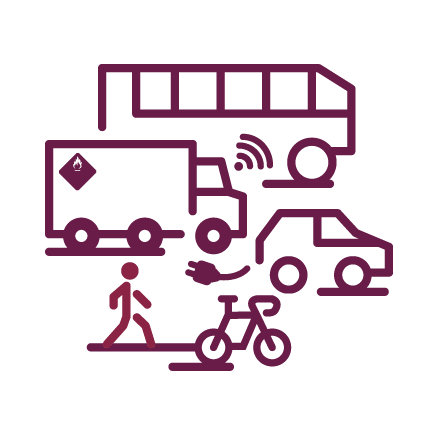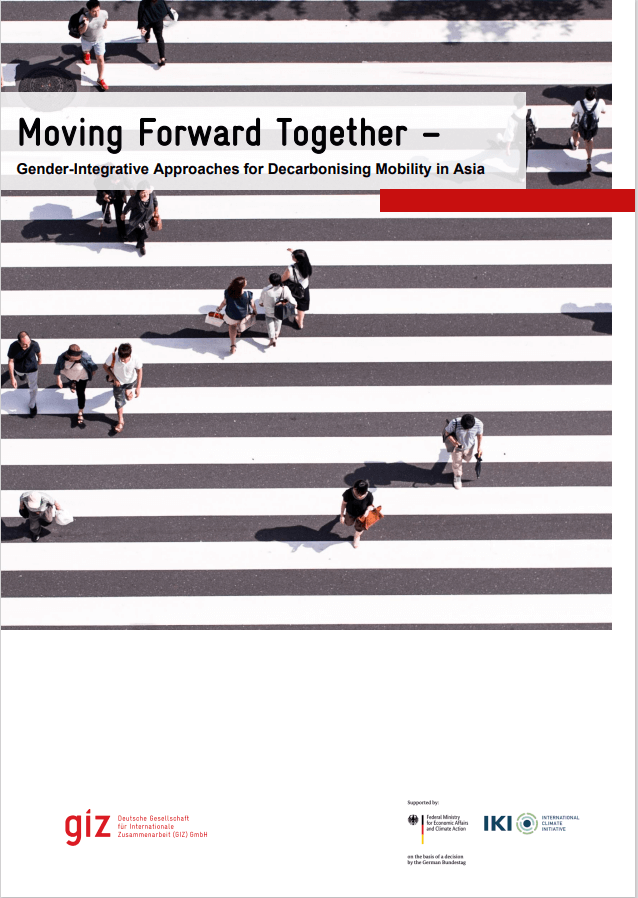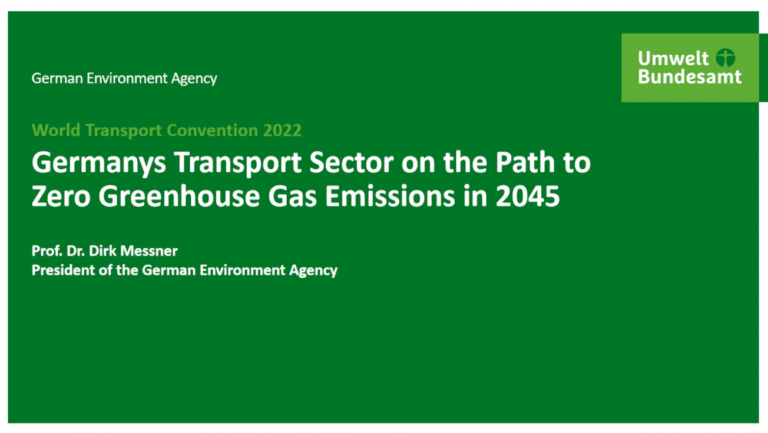On 28 October 2021, three days ahead of the 26th UN Climate Change Conference of Parties (COP26), China submitted its updated Nationally Determined Contributions (NDCs) to the United Nations Framework Convention on Climate Change (UNFCCC).
The updated NDCs are:
- China aims to have CO2 emissions peak before 2030 and achieve carbon neutrality before 2060,
- China aims to lower CO2 emissions per unit of GDP by over 65% from the 2005 level,
- China aims to increase the share of non-fossil fuels in primary energy
consumption to around 25%, - China aims to increase the forest stock volume by 6 billion cubic
meters from the 2005 level, - China aims to bring its total installed capacity of wind and solar
power to over 1.2 billion kilowatts by 2030.
The above listed goals were first announced by Chinese president Xi Jinping on Tuesday, September 22, 2020, during his speech at the General Debate of the 75th session of the UN General Assembly and on December 12, 2020, at the 2020 Climate Ambition Summit as parts of China’s climate protection pathway (see Figure 1).
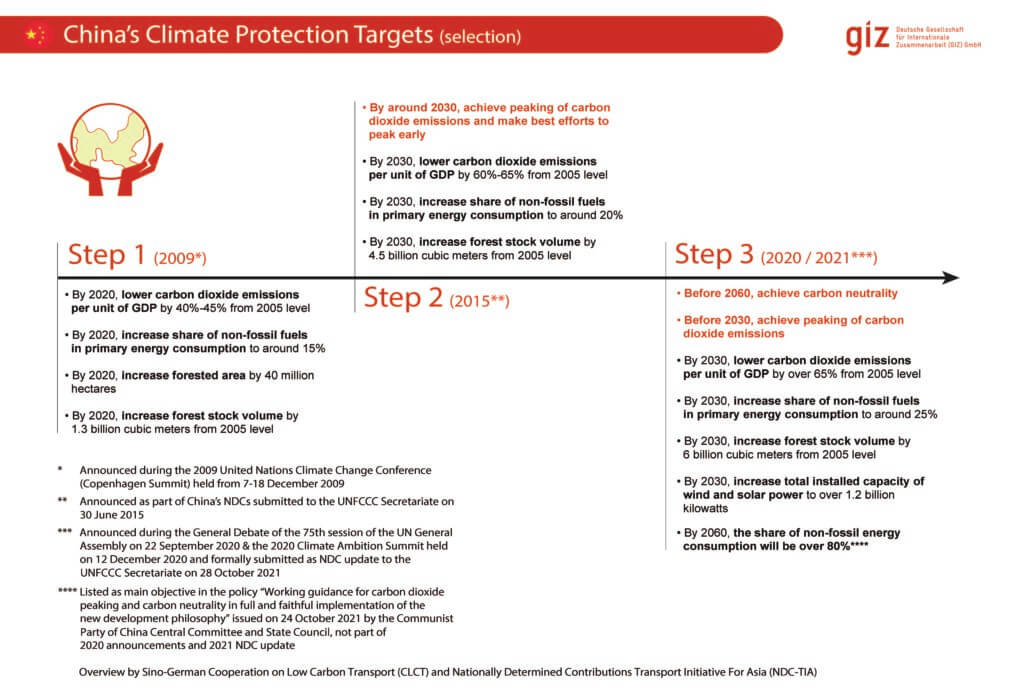
China presents in its updated NDCs section III. NEW MEASURES TO IMPLEMENT THE UPDATED NDC GOALS, which encompasses policies and measures adopted and results achieved by China with respect to NDCs, new goals and measures for enhanced actions on climate change, and active efforts in international cooperation on climate change.
The transport sector with a share of about 10% of China’s carbon dioxide emissions plays an important role for achieving the set 2030 and 2060 targets. Describing the way forward towards climate-friendly transport, in “Expedite the construction of green and low-carbon transportation system” a set of following measures is outlined:
- accelerate the construction of a comprehensive transportation network,
- channel energy into multi-modal transportation and increase the share of railways and waterways in the integrated transportation,
- constantly reduce the energy consumption and carbon intensity of transportation,
- optimize passenger transport, and guide the scale-up and intensive operation of those passenger transport enterprises,
- green logistics will be developed speedily,
- transport resources will be optimized,
- the overall utilization efficiency will be advanced,
- measures will be taken for expediting vehicles and vessels that are powered by new energy and clean energy,
- popularizing intelligent transportation,
- pushing forward the electrification of railways,
- giving impetus to constructing hydrogen filling stations,
- normalizing the utilization of shore-end cable for vessels at ports,
- move faster to put in place a convenient, efficient and moderately advanced network system for battery charging and swap,
- energy efficiency standards for fuel-powered vehicles and vessels will be upgraded,
- energy efficiency labeling system for transport equipment will be improved,
- timeworn vehicles and vessels that are highly energy-consuming and of high emissions will be phased out,
- further actively guide low-carbon travel,
- quicken the construction of large-capacity public transport
infrastructure including urban railways, special traffic lanes and bus rapid transit systems, - strengthen the construction of urban slow traffic systems, namely, special bicycle lanes, pedestrian walkways, etc.,
- by making comprehensive use of legal, economic, administrative
and other management measures, China will put particular emphasis on combating urban traffic congestion.
The measures are aligned with the existing short-, medium- and long-term transport development policies as well as the 1+N policy system for CO2 peaking and carbon neutrality (see Figure 2 and 3) where “1” stands for 2030 carbon dioxide peaking and 2060 carbon neutrality guidance and “N” stands for Action Plan for Carbon Dioxide Peaking before 2030 and relevant policies and action plans for key areas and sectors including transport. To further guide the green and low carbon development of China’s transport sector, a specific transport action plan will be released as part of the 1+N policy system for CO2 peaking and carbon neutrality.

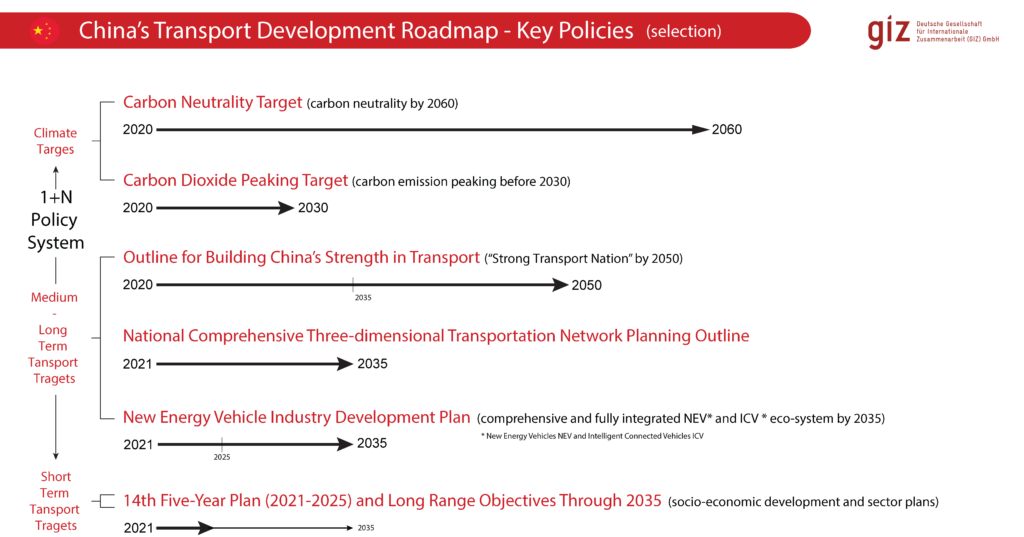
To better understand the development direction of China’s transport sector, please find here our publications and briefings:
